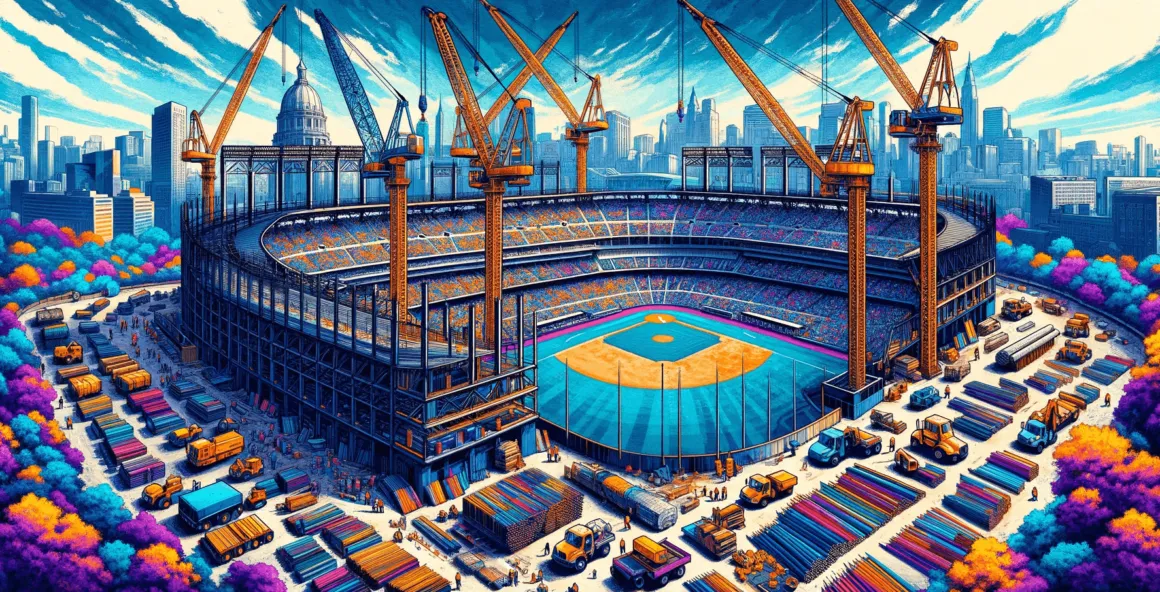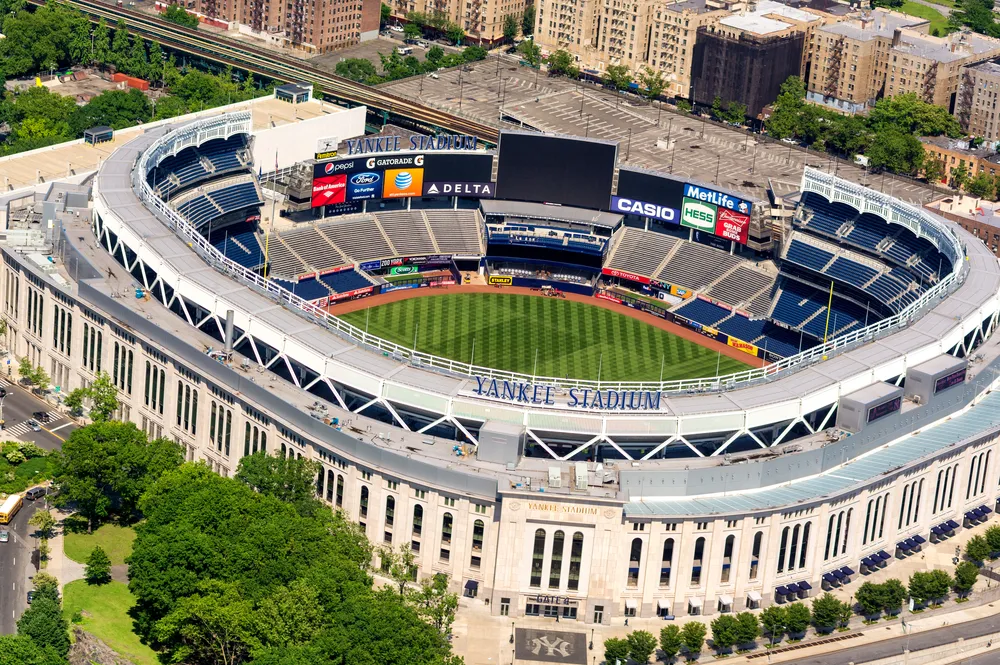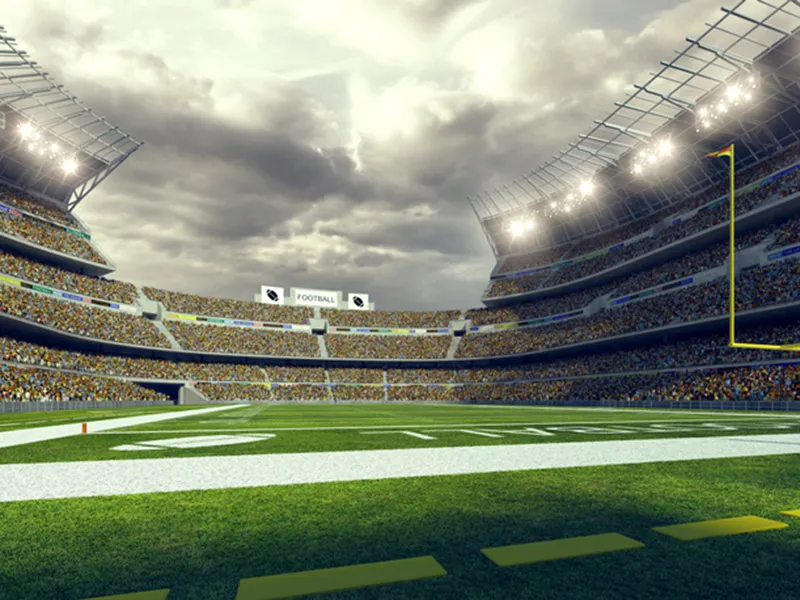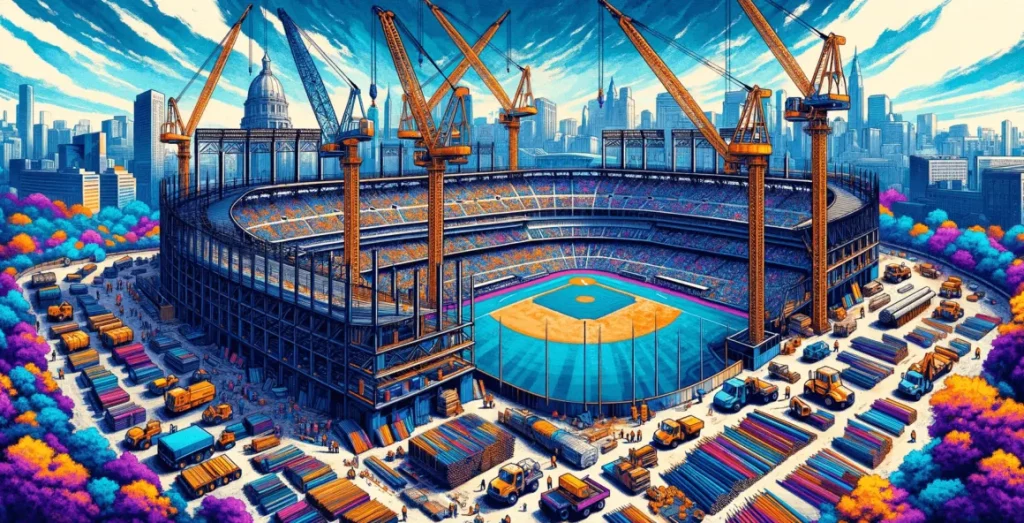Major League Baseball (MLB) is a sport that has captivated audiences for over a century. With its long history and passionate fan base, it’s no surprise that the league is constantly evolving and growing. One aspect that has seen significant changes over the years is the construction and costs of MLB stadiums. From the humble beginnings of wooden bleachers to now state-of-the-art facilities, the rise in cost of building and maintaining these stadiums is something worth exploring.
In this article, we will delve into the world of MLB stadiums and analyze the factors that contribute to their ever-increasing costs. We will also take a closer look at some of the most expensive stadiums in the league and discuss the impact of these costs on teams, fans, and the league as a whole. So let’s dive in and uncover the numbers behind the majestic stadiums of America’s favorite pastime.

The Evolution of MLB Stadiums
Before we get into the nitty-gritty of stadium costs, let’s take a brief trip down memory lane and understand how MLB stadiums have evolved over the years. In the early days of baseball, stadiums were simple structures with minimal amenities. Most were built from wood, which made them prone to fire hazards. Bleachers were the main form of seating, and there were no luxury boxes or modern amenities like we see in today’s stadiums.
The first major shift in stadium design came in the 1950s when multi-purpose stadiums started popping up around the country. These stadiums were designed to host various sporting events and concerts, leading to larger capacities and more revenue streams for teams. However, as the years went by, it became clear that these multi-purpose stadiums lacked character and did not cater to the needs of baseball fans. This led to the emergence of “cookie-cutter” stadiums, with similar designs and features, making it difficult for teams to establish a unique identity.
It wasn’t until the 1990s that we saw a significant change in stadium design, with the introduction of modern amenities and technology. Teams began to prioritize fan experience, leading to the rise of more intimate and unique stadiums. Today, most MLB stadiums are built with a specific team and its fans in mind, making each one a truly special place for baseball enthusiasts.
Now that we have a better understanding of the evolution of MLB stadiums, let’s dive into the numbers behind their construction costs.
The Factors Contributing to Stadium Costs
The cost of building an MLB stadium can vary greatly depending on several factors. Here are the main contributors to the ever-increasing costs of these facilities:
Location and Land Acquisition
One of the main factors that significantly impact the cost of an MLB stadium is its location. Teams often prefer to build stadiums in urban areas, making it easily accessible for fans and increasing its potential for revenue-generating activities. However, finding available land in cities and securing it for stadium construction can be extremely costly. In some cases, teams may also have to deal with environmental concerns or community opposition, which can further drive up the cost of land acquisition.
Design and Construction
The design and construction of an MLB stadium is where a large chunk of the costs come into play. With modern stadiums featuring unique architectural designs and state-of-the-art technology, the price tag can quickly escalate. From retractable roofs and video boards to elaborate lighting and sound systems, each element adds to the overall cost of the stadium. Moreover, the complexity of the design can also affect the construction timeline, leading to additional expenses.
Amenities and Technology
As mentioned earlier, fan experience has become a top priority for teams when it comes to stadium design. This has led to the incorporation of various amenities and technology to enhance the overall game day experience. From luxury suites and club lounges to high-speed Wi-Fi and charging stations, these features add to the overall cost of an MLB stadium. Teams are constantly looking for ways to improve the fan experience, leading to ever-increasing costs in this area.
Labor and Material Costs
The labor and material costs involved in building a stadium can also make a significant dent in the budget. Skilled labor is required for the construction of these complex structures, and their wages can add up quickly. Additionally, the use of high-quality materials, such as steel and glass, can also contribute to the final cost of the stadium. The availability of these materials and any fluctuations in their prices can also affect the overall cost of the project.
Maintenance and Operations
Building an MLB stadium is only the first step in the process; maintaining and operating it is an ongoing expense that teams have to bear. With high-tech features and modern amenities, stadiums require constant maintenance to ensure they are functioning correctly. This includes everything from landscaping and cleaning to regular updates of technology and equipment. These expenses can add up over time, making it crucial for teams to carefully consider the long-term costs of operating a stadium.
Now that we have a better understanding of the factors contributing to stadium costs let’s take a closer look at some of the most expensive MLB stadiums.
The Most Expensive MLB Stadiums

In recent years, there has been a surge in the construction of new MLB stadiums, with teams looking to upgrade their facilities and enhance the fan experience. Here are the top six most expensive MLB stadiums based on their total construction costs:
Globe Life Field – $1.2 Billion
Located in Arlington, Texas, Globe Life Field is the newest and most expensive stadium in the league. Home to the Texas Rangers, this state-of-the-art facility opened its doors in 2020. With a retractable roof and seating capacity of 40,300, it boasts of modern amenities like a 100-foot LED video board and a center-field bar and restaurant. The stadium’s unique design, coupled with its advanced technology, makes it one of the most expensive stadiums in the world.
Yankee Stadium – $1.5 Billion
Home to the New York Yankees, the new Yankee Stadium was built in 2009 to replace the old stadium that had been in use since 1923. With a seating capacity of 47,309, this iconic stadium is synonymous with the history of the Yankees franchise. It features the largest HD video board in the MLB and boasts of luxury suites, high-end dining options, and a museum dedicated to the team’s achievements. The construction of this stadium faced several delays and controversies, leading to its hefty price tag.
Citi Field – $900 Million
Located in Queens, New York, Citi Field opened its doors in 2009 as the new home of the New York Mets. This state-of-the-art facility has a seating capacity of 41,922 and offers fans a unique view of the city skyline from its upper decks. It also boasts of modern amenities like luxury suites, club lounges, and an interactive fan experience area. While it was built at a more modest budget compared to other stadiums on this list, the project still faced significant delays and cost overruns, contributing to its high construction costs.
SunTrust Park – $622 Million
Home to the Atlanta Braves, SunTrust Park opened in 2017 and boasts of a seating capacity of 41,084. Located in Cobb County, Georgia, this stadium was built with a focus on creating a true “baseball experience” for fans. From its open concourses and unique sightlines to its variety of food and beverage options, every aspect of this stadium was designed to enhance the fan experience. Despite its relatively lower construction costs, the stadium’s unique features and technology make it one of the most expensive in the league.
Target Field – $555 Million
Located in Minneapolis, Minnesota, Target Field opened its doors in 2010 as the new home of the Minnesota Twins. With a seating capacity of 38,544, this stadium features a unique design that incorporates elements from the city’s history and culture. It offers fans panoramic views of downtown Minneapolis and boasts of modern amenities like club lounges and luxury suites. The construction of this stadium faced significant delays due to harsh weather conditions, contributing to its high costs.
Marlins Park – $634 Million
Home to the Miami Marlins, Marlins Park opened in 2012 and boasts of a seating capacity of 37,442. This stadium stands out from the others on this list due to its futuristic and one-of-a-kind design. From its retractable roof and aquariums to its indoor outfield wall and swimming pool, every aspect of this stadium is designed to leave a lasting impression on fans. However, the stadium’s extravagant features come at a hefty price, making it one of the most expensive stadiums in the league.
The Impact of Stadium Costs

The rising cost of building and maintaining MLB stadiums has been a topic of discussion among teams, fans, and league officials. While these stadiums provide a source of revenue for teams, the high costs associated with them can also present challenges. Here are some of the impacts of stadium costs on various stakeholders:
Teams
For teams, building a new stadium or renovating an existing one often comes with a hefty price tag. This can strain their finances, especially for smaller market teams that may not have as many revenue streams as larger market teams. Moreover, the ongoing expenses of operating a stadium can also cut into the team’s profits. As a result, teams must carefully consider the costs and benefits of investing in a new stadium.
Fans
Fans are the ones who ultimately pay for these expensive stadiums through ticket prices, merchandise sales, and concession purchases. As the costs of stadiums continue to increase, it can lead to an increase in ticket prices and other expenses for fans. This makes attending games more expensive, which can be a barrier for some fans, especially those with lower incomes.
League
The rising costs of stadiums can also have an impact on the league as a whole. It can create a divide between larger market teams that can afford to build elaborate and expensive stadiums and smaller market teams that may struggle to keep up. This can potentially affect the competitiveness of the league and the overall fan experience. Additionally, if smaller market teams are unable to generate enough revenue through their stadiums, it can lead to financial instability, which can have a ripple effect on the entire league.
Conclusion
The construction and maintenance of MLB stadiums is a complex and costly endeavor that involves various factors. From location and design to technology and ongoing expenses, each element contributes to the final cost of these state-of-the-art facilities. While the rising costs of stadiums have presented challenges for teams and fans, they also provide an opportunity for teams to enhance the fan experience and generate more revenue streams.
As we continue to see new and innovative stadiums being built, it’s essential to consider the long-term impact of these costs on teams, fans, and the league. By understanding the numbers behind these majestic structures, we can gain a better appreciation for the ever-evolving world of MLB stadiums.


